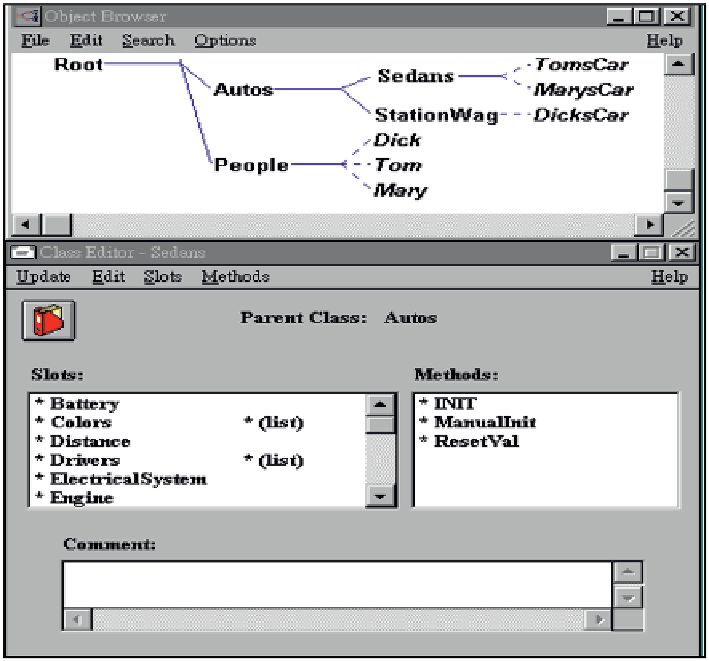Information Technology Reference
In-Depth Information
Fig. 2.17
An example of frame-based system: KAPPA
the number and range of allowable attribute values. A slot usually consists of two
parts: a slot-name, which describes an attribute, and a slot-filler, which describes
the character of the slot values. The slot-filler supports very powerful features (see
Fig.
2.18
). It allows the filler to be represented as single/multiple values, instance
frames, or procedures. The single or multiple value situation is dependent on the
“cardinality”. A slot-filler usually has an attribute type, such as Text, Number, or
Boolean, to represent the values. Frame-based systems also allow users to define
the object type in their slot-filler. This creates a new relationship called aggregation,
i.e., “a_part_of” link. Aggregation is an abstraction in which a relationship between
objects is represented by a higher level, aggregate object. Most current systems only
allow a single instance frame. Procedural attachment is also found in most frame-
based systems. This allows users to define the attribute type as a procedure so as to
represent procedural information. The procedure is a normal routine that is called
whenever a value for a slot is required.
Restriction and Default functions are also important features of frame-based sys-
tems. Many frame-based systems allow the use of the logical connectives NOT,

Search WWH ::

Custom Search